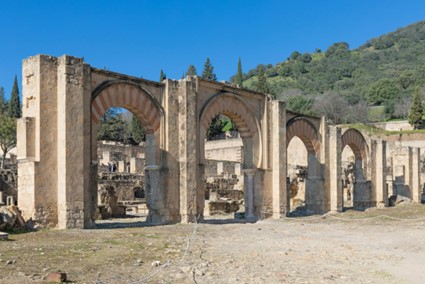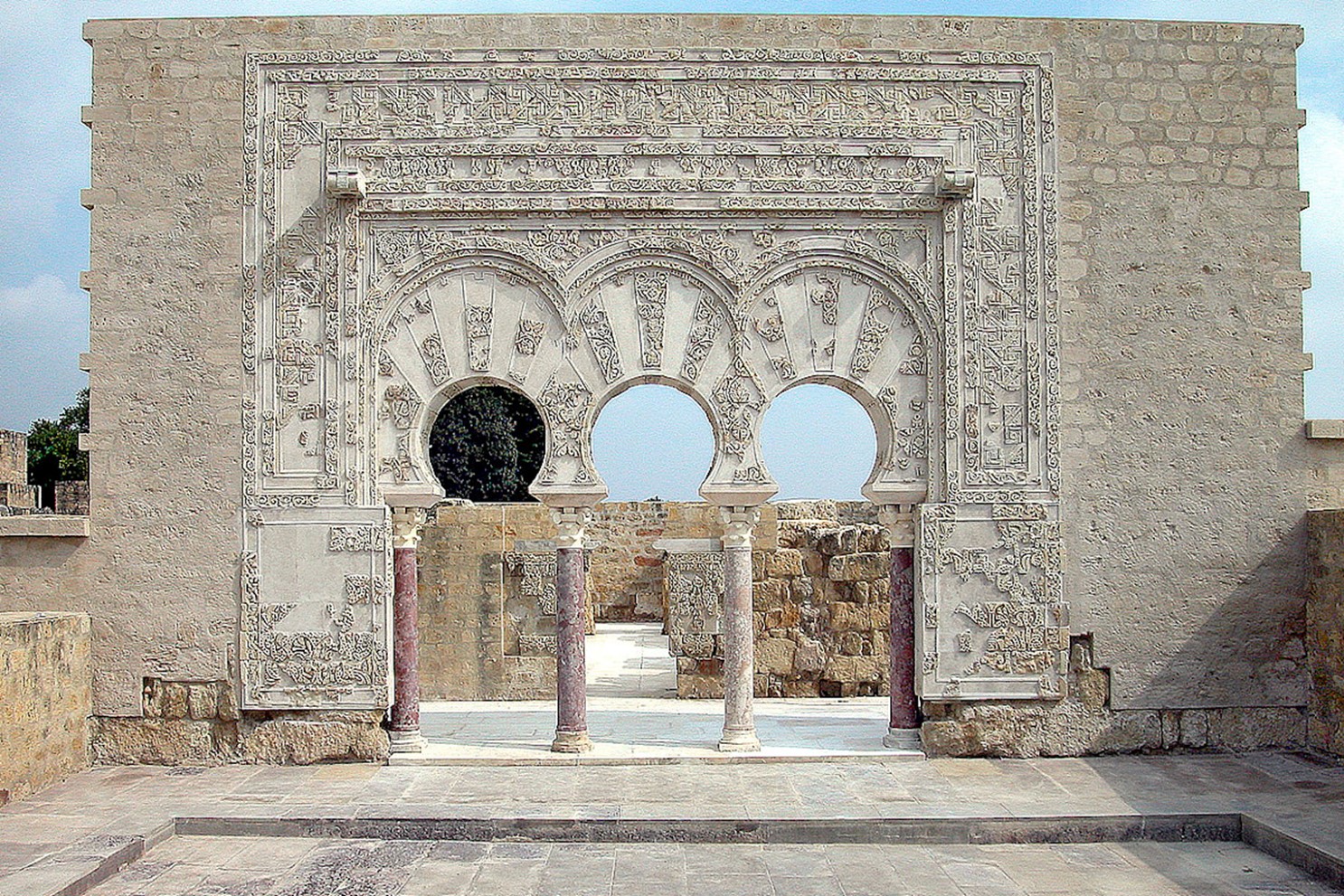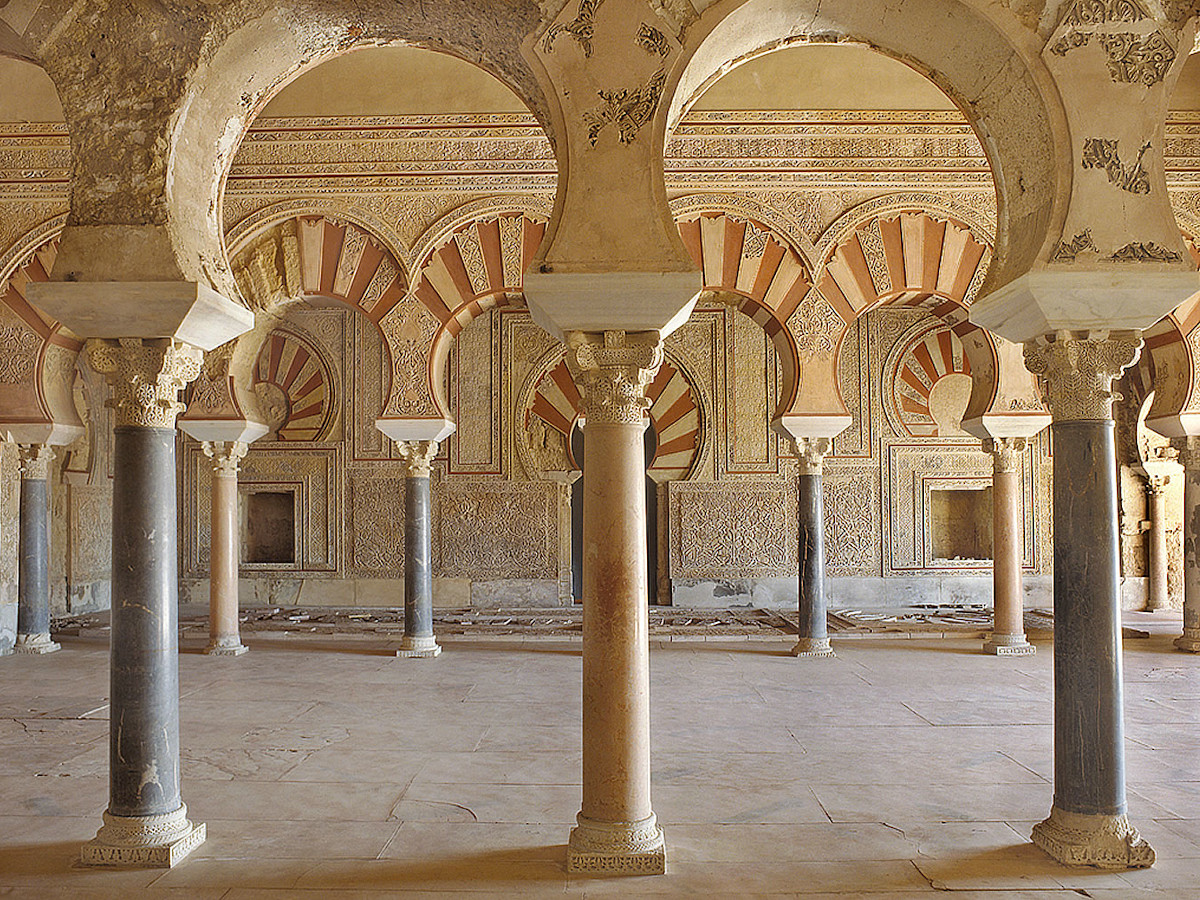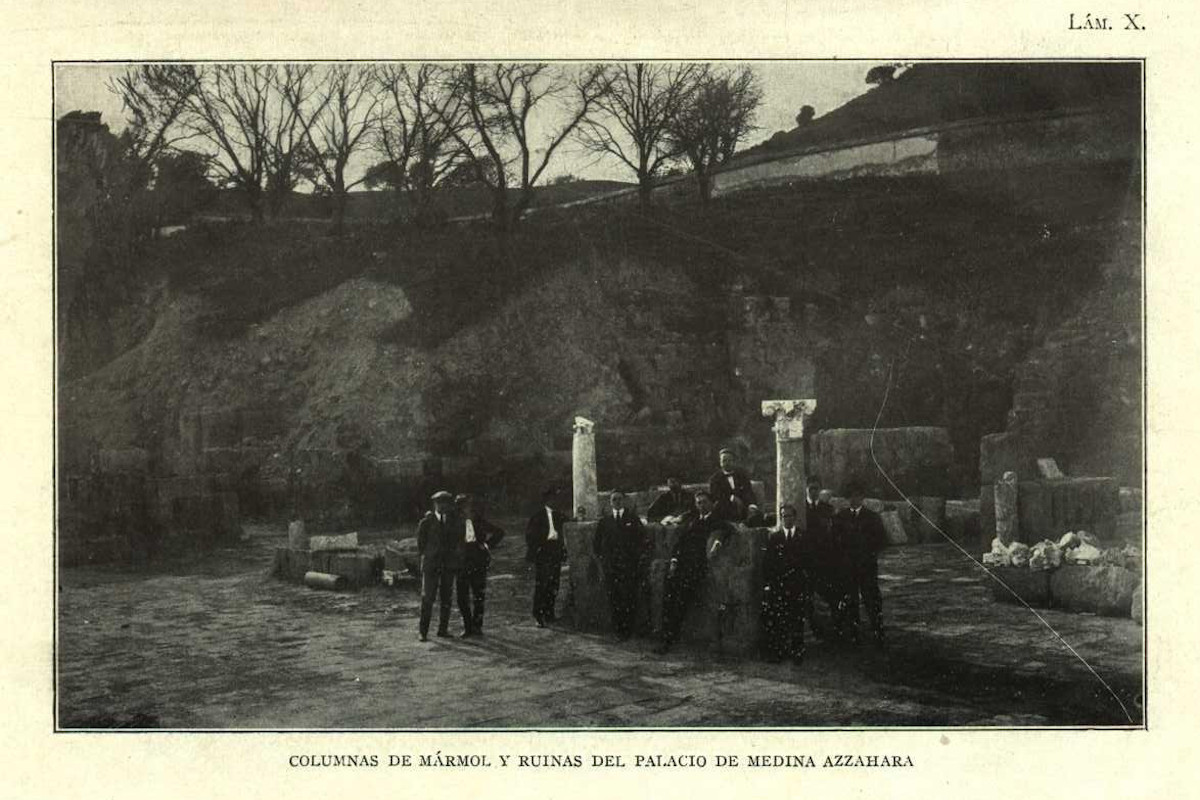
Medina Azahara: the city that was born, shone and fell in just 70 years
12 of November of 2024
In the first half of the tenth century, Sultan Abd al-Rahman III chose a point located a few kilometers from the city of Cordoba and at the foot of the Sierra Morena to build the new seat of the caliphate. There, on the stepped ground that joins a small mountain and the beginning of a large valley, he laid the first stone of Medina Azahara.
The city was planned and built to shine as the residence of the caliph and as the center of the Umayyad dynasty. And so it was, but only for a short time: a mere seven decades after its inauguration, it stood looted and abandoned.
The remains of the city aroused the curiosity of Cordoba’s neighbors during the following centuries. Archaeological studies which began in 1911 continue today and allow us to better understand what the infrastructures were like in the splendor of Al-Andalus.
The construction of the shining city
Medina Azahara (the name in Spanish of the Arabic name Madīnat al-Zahrā, meaning “the shining city”) was conceived and planned to reflect hierarchy. For this reason, it was located in a tiered and sloping area, which allowed the spaces to be organized in three large parts: the first, and highest, housed the caliph’s residence; the second, the official buildings, such as the viziers’ house, the administrative offices and the gardens; and the third, the spaces dedicated to the people, such as housing and commerce.
Thanks to this organization, the largest and most imposing buildings dominated the valley and could be seen from afar. In addition, the layout of the city at the foot of a mountain and on terraces ensured the supply of water through hydraulic systems and the transport of materials from nearby quarries.

Remains of Medina Azahara today. Jordi Vich Navarro (Unsplash)
The construction of Medina Azahara began in 936 and ended a few years later, with the construction of a great wall that isolated and protected it. It had a rectangular shape with perfect proportions, standing in contrast to the idea of chaotic and labyrinthine streets that we usually have of the Muslim urbanism of that period.
In the year 945, the court of the sultan moved to this city in the mountains, giving rise to the construction of an important road network of which the remains of some roads and bridges have been preserved.
From the Mosque to the Rich Hall
As pointed out by UNESCO, the ruins of Medina Azahara tell us of a city with numerous elements of infrastructure, such as roads, bridges and hydraulic systems. The most important buildings were made of marble and were highly ornamented, with carved decorations and motifs both religious and inspired by the natural world.

Façade of the Yafar’s residence. Wikimedia Commons.
Like other Muslim cities of the time, Medina Azahara had a mosque, public baths, several gardens and buildings for administrative and military activities. Both for its political and artistic value, the central axis of the whole city was the Hall of Abd al-Rahman III, also known as the Rich Hall.
This hall with several naves was the building in which the caliph received those who came to meet him. To get there, they had to cross the entire city, pass through immense gardens full of fountains and – as is narrated in records of that time – wait for long hours in adjacent spaces until the sultan gave them access to the throne room.

Image of the interior of the Rich Hall, whose columns and horseshoe arches are similar to those of the mosque of Córdoba. Wikimedia Commons.
The Rich Hall, one of the best-preserved spaces in the whole city and which is being restored to recover its original appearance, has inspired numerous legends. One of them features a pond of mercury. The story goes that the sultan, after building this majestic hall whose beauty amazed his visitors, wanted to add one more surprising element.
He placed in the center of the room a pool filled with mercury that, as it moved, reflected the light and illuminated the ceilings and walls, creating an impression that the whole room was moving. Legend has it that people who watched this show in the impressive Rich Hall ended up even more convinced of the sultan’s power and status in the land.
The rapid demise of Medina Azahara
The inscriptions preserved in the Rich Hall suggest that it was built in only four years. The entire city was built in barely a decade, which no doubt required great means and quantities of resources. And yet it was all over in just 70 years.
The decline of Medina Azahara began at the end of the 10th century, coinciding with the collapse of the caliphate and years of confrontations, conflicts and political quarrels. The city was destroyed and abandoned, and long centuries of looting began, both by enemies of the Umayyads and by citizens of neighboring towns, who came for valuable objects and materials to build their own constructions.

Image of the first archaeological excavations in Medina Azahara in the early 20th century. Wikimedia Commons.
Today a small part of the total of Medina Azahara has been excavated, and special attention is being paid to the restoration of the Rich Hall, a building that reveals and shows the richness of the construction methods of the Umayyad world.





There are no comments yet